Why is accurate – or authentic – Masonic research so important?
The importance of making a daily advancement in Masonic knowledge is something that The Square is passionate about promoting.
Most days we send out messages on social media containing thought-provoking and useful quotes, suggestions, or questions.
But key to Masonic knowledge is the information we receive and the accuracy of that information, whether it be in a book, journal or magazine, on a website, or social media.
There is an abundance of material that has been written about Freemasonry since its official beginnings in the early eighteenth century, much of which has come from official publications via Grand Lodges, or authentic papers and transactions written by scholars associated with Masonic Research Lodges.
However, there is equally as much written that is at the least inaccurate, and at worst, inflammatory and dangerous.

As a reader, unless you are a seasoned researcher, you will probably not be able to tell if something is inaccurate or not.
Misinformation occurs for many reasons: have you ever played ‘telephone’ or ‘Chinese whispers‘? These games allude to how a quote or piece of information has passed through so many people that the original message has been irretrievably lost or altered.
There is a humorous anecdote regarding a message sent during wartime that began as: ‘Send reinforcements, we’re going to advance’ and at the end of the relayed transmission became ‘send three and fourpence, we’re going to a dance’.
This is an example not only of how relayed stories or quotes can become completely distorted but also the fact that the anecdote itself has been reported in several different versions, and contexts, since 1915!

Another reason for inaccuracies can be anything from simple typos, fanciful speculation and/or dubious interpretations surrounding almost every aspect of Freemasonry (usually perpetuated by non-Masons).
You only have to view some of the more out-there websites and forums to see examples of some seriously fanciful notions about Freemasonry and Masons in general.
Think about how this kind of misinformation has impacted the Organisation, do you want to perpetuate any of it, even if some of it looks historically or factually accurate to you?
But misinformation can also come from those within the Fraternity – perhaps their research was not thorough enough, and they merely repeated someone else’s inaccurate research; or illogical conclusions had been drawn, or confirmation bias involved.
Confirmation bias is something we all do to some extent but some writers – especially of the more esoteric branches of Freemasonry – succumb to it on a regular basis, often distorting things to a ludicrous level.
These ‘facts’ are often then embedded in more and more publications or platforms and we have to unpick their ‘facts’ to get to the actual truth of the matter.
Just because we want something to be true, doesn’t mean it is.
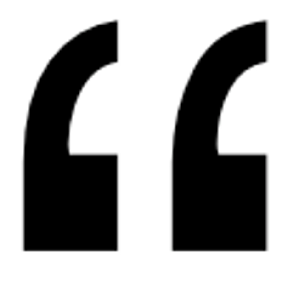
Confirmation bias – the tendency to search for, interpret, favour, and recall information that confirms or supports one’s prior personal beliefs or values.

The English philosopher and scientist Francis Bacon (1561–1626) wrote about confirmation bias in his Novum Organum [New Organon(1620)] he wrote that biased assessment of evidence drove ‘all superstitions, whether in astrology, dreams, omens, divine judgments or the like’. He followed with the observation that:
The human understanding when it has once adopted an opinion…draws all things else to support and agree with it. And though there be a greater number and weight of instances to be found on the other side, yet these it either neglects or despises, or else by some distinction sets aside or rejects[.]
Academics and lay-researchers of all disciplines have to learn how to conduct research without bias and it’s not easy.
So, how can we tell that the information we have discovered is authentic?

IMAGE CREDIT: by John Hain from Pixabay

critical thinking:
the objective analysis and evaluation of an issue in order to form a judgement.

What does a critical thinker do when evaluating information?
They ‘analyse, evaluate, explain, and restructure thinking, thereby ensuring the act of thinking without false belief’.
The research must be ‘authentic’.
According to the Social Research Glossary, ‘Authentic’ is defined as:
‘something that is genuine or that represents the essence of an idea…something that is the real article or something that is genuine rather than being a reproduction, copy or something masquerading as something that it is not. This applies, for example, to historical objects: are they really from when they purport to be or are they later copies. This might apply to non-tangible objects such as music or poetry as well as more tangible cultural objects such as pottery, paintings and so on.’
[Harvey, L., 2012-20, Social Research Glossary, Quality Research International]
A good researcher:
- asks pertinent questions
- looks for evidence to support claims
- assesses statements and arguments without bias
- suspends own judgements/beliefs until backed up by critical examination
- is not afraid to accept information that does not align with preconceived beliefs or ideas (confirmation bias)
- is humble enough to admit any lack of understanding and is willing to learn
- clearly defines a set of criteria for analysis
- can give and receive critical feedback
- rejects information that is incorrect or irrelevant
- cross-references and then cross-references again – dates, names, facts
- uses plagiarism/fact and quote checkers
How do we trust an author’s information or version of events? Not all authors are automatically experts.
We should ask:
- What credentials does the author have?
- What have they written previously and where was it published?
- What background in the subject does he/she have?
- His/her reputation in Masonic circles?
- Peer reviews
- Is there anything the author is trying to prove – are they obviously biased towards one aspect of a subject and not entertaining another?
- Is the work adequately referenced, what are their sources?
- Is the information up-to-date?
The subject of how to research – and write – is a huge one; this article is merely a short introduction.
But it is a subject we will be covering over the forthcoming issues, and The Square will be offering an exclusive course for aspiring Masonic authors and researchers. Watch this space!
Editor’s Note:
You may have noticed that The Square often hyperlinks to external sources, including Wikipedia (which has its own issues). Why do we link to Wikipedia? Even though some of the information may not be 100% accurate, it is, on the whole, a reasonably reliable source of quick information for those seeking a definition or an introduction to a subject. We would not recommend it as an end resource for research, but it is a fantastic stepping stone for the curious mind!
Resources
Check those quotes, did Socrates really say that?! https://quoteinvestigator.com/
Have you read that somewhere before? Put the page through a plagiarism checker: https://www.grammarly.com/plagiarism-checker
Research lodges
A Research lodge is a particular type of Masonic lodge which is devoted to Masonic research.
It is a lodge, and as such has a charter from some Grand Lodge. However, it does not confer degrees, and restricts membership to Master Masons of some jurisdiction in amity with the jurisdiction that the Research Lodge is in.
Related to Research Lodges are Masonic research societies, which serve the same purpose but function fundamentally differently.
There are research lodges in most countries where Freemasonry exists.
The oldest Research Lodge is Quatuor Coronati No. 2076, founded in 1886 under the jurisdiction of the United Grand Lodge of England.
It accepts members from all over the world through its Correspondence Circle. A book of transactions called Ars Quatuor Coronatorum (which includes the papers given in the lodge) has been published every year since 1886.
Most Research Lodges have some type of transactions, proceedings, or even just a newsletter that is published regularly.
There is a comprehensive, but not exhaustive list, of worldwide research Lodges here:
Article by: Philippa Lee. Editor

Philippa Lee (writes as Philippa Faulks) is the author of eight books, an editor and researcher.
Philippa was initiated into the Honourable Fraternity of Ancient Freemasons (HFAF) in 2014.
Her specialism is ancient Egypt, Freemasonry, comparative religions and social history. She has several books in progress on the subject of ancient and modern Egypt. Selection of Books Online at Amazon

How To Research (Open Up Study Skills)
by Loraine Blaxter; Christina Hughes;
Malcolm Tight
How to Research is a clear and accessible guide to the business of doing a research project. It systematically takes the reader through from the planning to the writing up and finishing off. The new edition of this book will include:
-Expanded section on methodology
-Expanded section on Literature Reviews
-Inclusion of a glossary

MLA Handbook
(Mla Handbook for Writers of Research Papers)
by Modern Language Association
The Modern Language Association, the authority on research and writing, takes a fresh look at documenting sources in the eighth edition of the MLA Handbook.
Works are published today in a dizzying range of formats. A book, for example, may be read in print, online, or as an e-book–or perhaps listened to in an audio version.
On the Web, modes of publication are regularly invented, combined, and modified. Previous editions of the MLA Handbookprovided separate instructions for each format, and additional instructions were required for new formats.
In this groundbreaking new edition of its best-selling handbook, the MLA recommends instead one universal set of guidelines, which writers can apply to any type of source.
Shorter and redesigned for easy use, the eighth edition of the MLA Handbook guides writers through the principles behind evaluating sources for their research.
It then shows them how to cite sources in their writing and create useful entries for the works-cited list.
More than just a new edition, this is a new MLA style.

Research Papers For Dummies
by Geraldine Woods
You’re sitting at your desk in a classroom or in an airless cubicle, wondering how many minutes are left in a seemingly endless day, when suddenly your teacher or supervisor lowers the boom:
She wants a research paper, complete with footnotes and a list of sources. She wants accuracy, originality, and good grammar. And – gasp! – she wants ten pages! You may be 16 years old or 60 years old, but your reaction is the same: Help!
Take heart. A research paper may seem daunting, but it’s a far-from-impossible project to accomplish. Turning research into writing is actually quite easy, as long as you follow a few proven techniques.
And that’s where Research Papers For Dummies steps in to help. In this easy-to-understand guide, you find out how to search for information using both traditional printed sources and the electronic treasure troves of the Internet.
You also discover how to take all those bits of information, discarding the irrelevant ones, and put them into a form that illustrates your point with clarity and originality.
Recent Articles: masonic history
 Protestantism and Masonic Influence in Brazil Discover the untold story of how Freemasons helped Southern Americans immigrate to Brazil post-Civil War, fostering economic and educational growth in Santa Bárbara d’Oeste and Americana. Learn about their pivotal role in establishing Protestant churches and ensuring the secularity of the Brazilian State amidst a Catholic-dominated society. |
 Explore the proper use of the sacred word in Brazilian Freemasonry through an analysis of Masonic literature and Bible translations. Uncover the errors in pronunciation and the need for corrections to maintain liturgical coherence in rituals. Discover insights on Masonry, rituals, and the Hebrew word Boaz. |
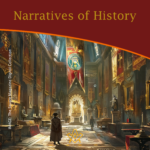 Narratives of History |
 A Very Royal Sesquicentenary |
 Unveiling the Enigma: Discover the Royal Society's Legacy and its Impact on Science. Delve into the fascinating history of the Royal Society, the prestigious UK academy shaping scientific progress since 1660. Explore its pivotal role in advancing knowledge, fostering collaboration, and unlocking the secrets of the universe. Prepare to be amazed! |
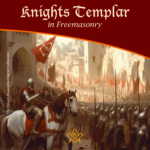 Knights Templar in Freemasonry Uncover the Mysteries of the Knights Templar in Freemasonry! Delve into the intriguing world where chivalry and symbolism intertwine. Discover the captivating rituals and ancient secrets behind the Knights Templar Masonic Orders. Explore the historical connection and delve into the enigmatic narratives that continue to fascinate enthusiasts today. Unveil the hidden truths now! |
 The Royal Arch stands as the rainbow of promise in the Ritual; it stands as the promise of the resurrection; of that which was lost and that it shall be recovered. The question arises as to whether the Master's Word was originally communicated in the Third Degree? On this point there is some diversity of opinion. Originally published in 1915, this insight into the Fourth Degree – the Holy Royal Arch – is as relevant today as it was over 100 years ago. |
 Unveiling the Mysteries of Druidism: Discover the Intriguing Connection with Freemasonry. Explore the ancient spiritual practice of Druidism and its fascinating ties to the enigmatic world of Freemasonry. Delve into the shared symbolism and rituals that have captivated minds for centuries. Unlock the secrets of these intertwined traditions today! |
 Uncover the legacy of freestone masons and their pivotal role in crafting medieval cathedrals. Discover the artistry behind their techniques, the hierarchy within their craft, and the enduring impact of their intricate carvings. A deep dive into the world of these master craftsmen awaits you! |
 Unearth the intriguing journey from Vincha Culture to Freemasonry. Discover how ancient building methods intertwine with modern Masonic philosophies. This exploration will shed light on the fascinating link between the Serbian term "shestarenye" and the symbolic significance of the compass in Freemasonry. |
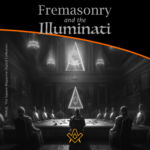 Freemasonry and the Illuminati Unravel the enigmatic world of Freemasonry and the Illuminati in our latest exposé. Dive into centuries-old mysteries, debunk conspiracy theories, and discover the truth behind these elusive societies. Are they puppet masters or mere myths? Join us as we dissect history and fact from fiction. |
 The Île des Templiers, or “Island of the Templars” lies within a leafy park in Paris. The execution site of Jacques du Molay, the last Grand Master of the Knights’ Templar bears a plaque with the epitaph ‘A cet endroit / Jacques de Molay / Dernier grand maître / de l'ordre du temple / a été brûlé le 18 Mars 1314’ (‘In this location / Jacques de Molay / Last grand master / of the order of the temple / was burned on 18 March 1314’) |
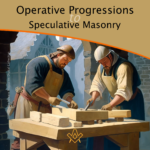 Operative Progressions to Speculative Masonry Both Operative and Speculative Masonry are an important part of the modern fraternity of Freemasonry, which combines elements of both traditions. Today, Freemasonry is a fraternity that is open to men of good character, who are interested in personal development and in making a positive contribution to their communities. |
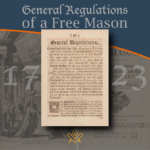 General Regulations of a Free Mason, 1723 General Regulations of a Free Mason as contained in Anderson's Constitutions of the Freemasons, published 1723. the Regulations are of great historical interest. Compiled by George Payne, the second Grand Master of the Premier Grand Lodge of England, they were printed in 1722/3, thus published just over five years after the formation of the Grand Lodge 1717. |
 The Genesis of the 1723 Book of Constitutions 2023, marks the three hundredth anniversary of the publication of the first printed Book of Constitutions of the Grand Lodge formally established in London two years previously. This is an anniversary whose significance extends beyond freemasonry. A paper by Andrew Prescott |
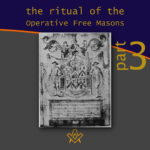 The Ritual of the Operative Free Masons - P3 Existing Operative Free Masons. The ritual I am about to refer, is that of "The Worshipful Society of Free Masons, Rough Masons, Wallers, Slaters, Paviors, Plaisterers, and Bricklayers." By Thomas Carr, M.D., P. M. Honorary Member of the Guild of Operative Free Masons |
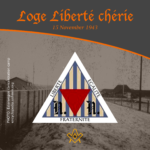 Liberté chérie was a Masonic Lodge founded in 1943 by Belgian Resistance fighters and other political prisoners at Esterwegen concentration camp. It was one of the few lodges of Freemasons founded within a Nazi concentration camp during the Second World War. |
 The Ritual of the Operative Free Masons - P2 If anyone doubts the fact that the formation of Speculative Free Masonry was due to and based upon Operative Free Masonry, it is quite easy to convince him of his error if he will only study the first Book of Constitutions. By Thomas Carr, M.D., P. M. Honorary Member of the Guild of Operative Free Masons |
 In 1881, Freemasonry rose from the ashes of a fire in the mining town of Kokomo, Summit County, Colorado. Corinthian Lodge No. 42, along with Kokomo, no longer exists but it holds the record of having been – at an elevation of 10,618 feet – the highest Masonic Lodge in the USA. |
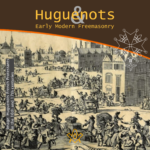 The Huguenots and Early Modern Freemasonry The Huguenots influence in the development of early modern Freemasonry at the time of the formation of the Grand Lodge in London around 1717 / 1723. |
 November is a month of reflection – perhaps due to the fact that we are getting close to the years' end – but also because Remembrance / Armistice Day (11 November) is a significant date in most countries' diaries. |
 Speculative Freemasonry, as practise by Grand Lodge of England, was officially born just over three hundred years ago, is today an international organisation, counting over six million members. It has been subjected to persecution, suppression, and abolition throughout its history. In its infancy, only a couple of decades after its official birth, it had already become a target. |
 The Ritual of the Operative Free Masons - P1 The original paper was written, first, to prove that Speculative Free Masonry was derived from Operative Free Masonry; second, to give some account of the Operative Free Masons, of their Ritual, and of their customs. By Thomas Carr, M.D., P. M. Honorary Member of the Guild of Operative Free Masons |
 American Fraternalism in the 19th and Early 20th Centuries The late 19th and early 20th centuries in the United States has been called the "Golden Age of Fraternalism." How did this come about and why was the idea of joining a fraternal organization so popular? We will explore this question and examine the regalia used by many fraternal organizations in this period. |
 Societas Draconistarum, meaning "Society of the Dragonists"– was a chivalric Order for selected nobility, founded in 1408 by Sigismund von Luxembourg, who through marriage became the King of Hungary (1387–1437) and later Holy Roman Emperor. The Order was fashioned after the military orders of the Crusades, requiring its initiates to defend the cross and fight the enemies of Christianity, in particular the Ottoman Empire. |
 The Perjured Free Mason Detected Was Samuel Prichard a perjured individual, or simply a misguided Freemason? Prichard's book "Free Masonry Dissected" published in 1730, is now used by many Masonic historians as a source of reference with regards to the introduction of the third degree into the Craft. But at the time it was published in 1730, it was not so well received by members of the Grand Lodge of England. |
 17th century and the Holy Royal Arch This article focuses on a period of transition between a point in time when we can safely and historically identify the first formation of what could be called as the ‘Royal Arch’ and the historical events that have preceded it. |
 Most Freemasons have heard the terms 'Operative' and 'Speculative' Masons, and this article helps to understand the difference: |
 Roberts' Constitutions of Freemasonry 1722 Published a year before Anderson's Constitutions, The Old Constitutions Belonging to the Ancient and Honourable SOCIETY OF Free and Accepted MASONS. Originally printed in London England; Sold by J. Roberts, in Warwick-Lane, MDCCXXII.(1722) |
 From 'Songs of religion and life', 1876 by John Stuart Blackie (1809-1895) |
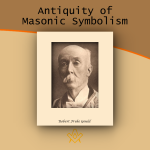 On the Antiquity of Masonic Symbolism Is the Symbolism of Masonry an inheritance derived from the old Masons who flourished before the era of the Grand Lodges (1717); or has it been borrowed from the Rosicrucians or others, after 1717? |
 Mason's Marks – from Egypt to Europe? Mason's marks have been a source of intrigue, not only to Freemasons but to historians and archaeologists. The use of simple pictograms have been employed for millennia by artisans to identify their work. But where did they originate and why? |
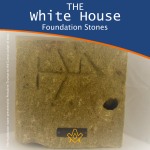 The White House Foundation Stones Further to the articles in our series on the history of the stone masons, we have a rather intriguing addition. During the 1950's renovation of the White House, President Truman retrieved more than 100 stone blocks with stonemasons marks. |
 What the Goose and Gridiron Tavern is in the ancient annals of London Freemasonry, The Green Dragon Tavern is to the memories of the Free-mason, of Boston and New England. |
 Auschwitz concentration camp: video photo article taken in 2013 |
 There are two things of importance happening this day - 27 January |
 Two approaches regarding the understanding of Freemasonry |
 Masonic Research in England c1930 An article which appeared in an American Masonic magazine, c1930 and which was reproduced in England, provoking a little controversy. |
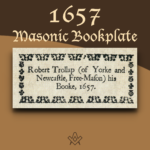 Masonic bookplates the ‘Brethren’s spiritual coats of arms and marks’ |
 The Unlawful Societies Act of 1799 Rebellious Freemasons and the 21st century |
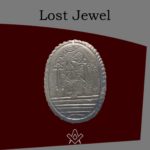 In 1912, Sarah Dowd of Dromore, Ireland, found a Masonic jewel dated 1517 - a date two hundred years before the establishment of Grand Lodge... |
 Freemasonry and Fascist Regime Interesting speech by the famous historian Prof. Aldo A. Mola, who links the fascist regime with the Masonic Associations. |
 Was famous Russian poet Alexander Pushkin a Freemason? And if so, was he a member of the lodge ‘for which all the lodges in Russia were destroyed’? |
 The Importance of Masonic Research Why is accurate - or authentic - Masonic research so important? The importance of making a daily advancement in Masonic knowledge is something that The Square is passionate about promoting. |
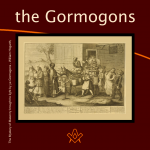 The Antient Noble Order of the Gormogons had a brief existence in the eighteenth century; they left few records or accomplishments, |
masonic knowledge
to be a better citizen of the world
share the square with two brothers

click image to open email app on mobile device









